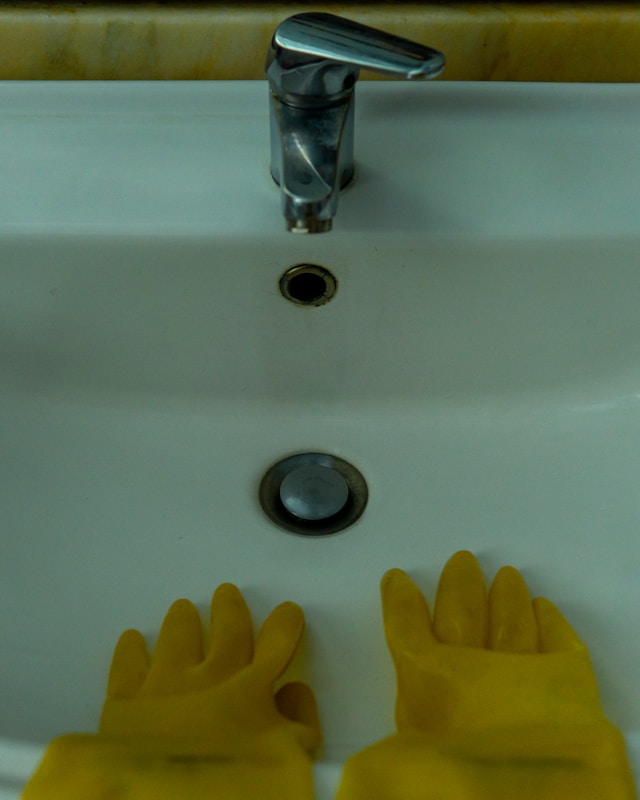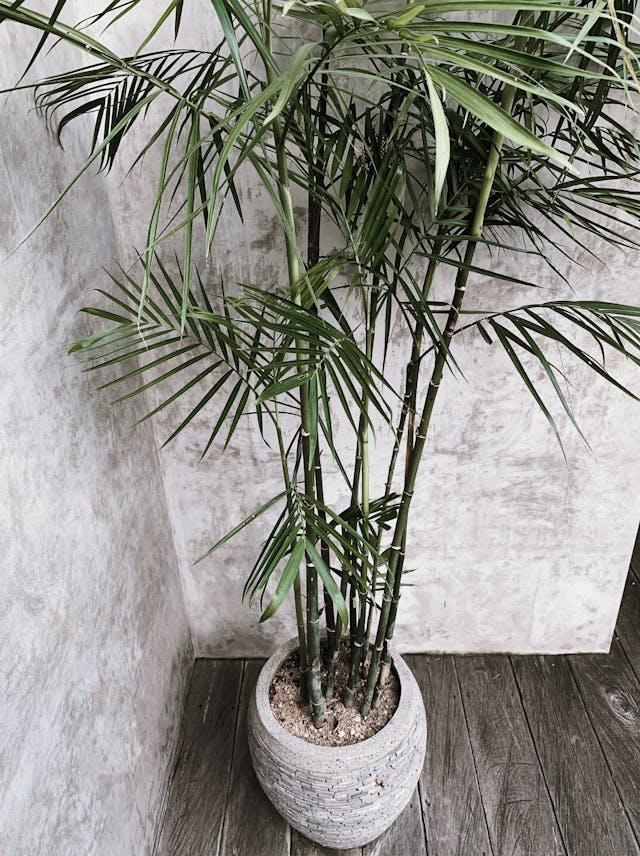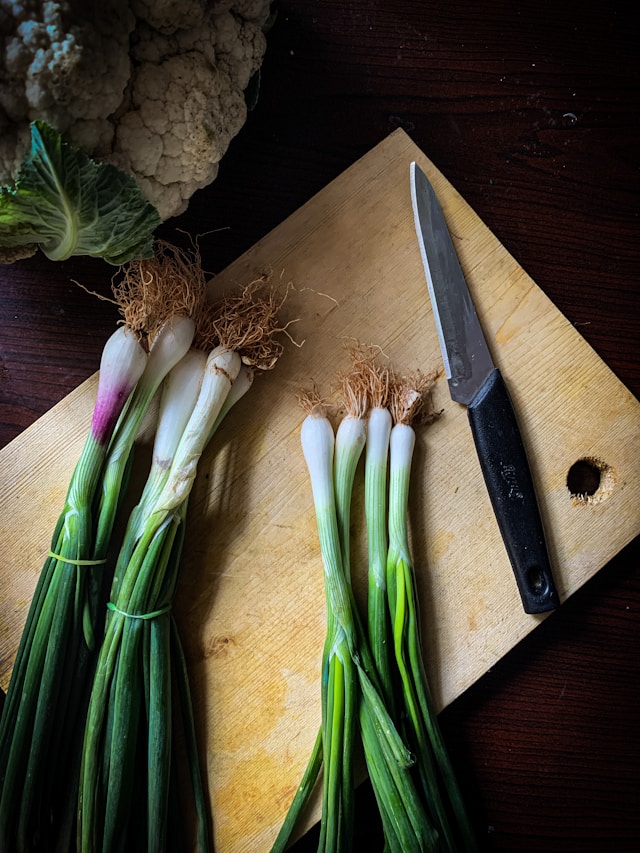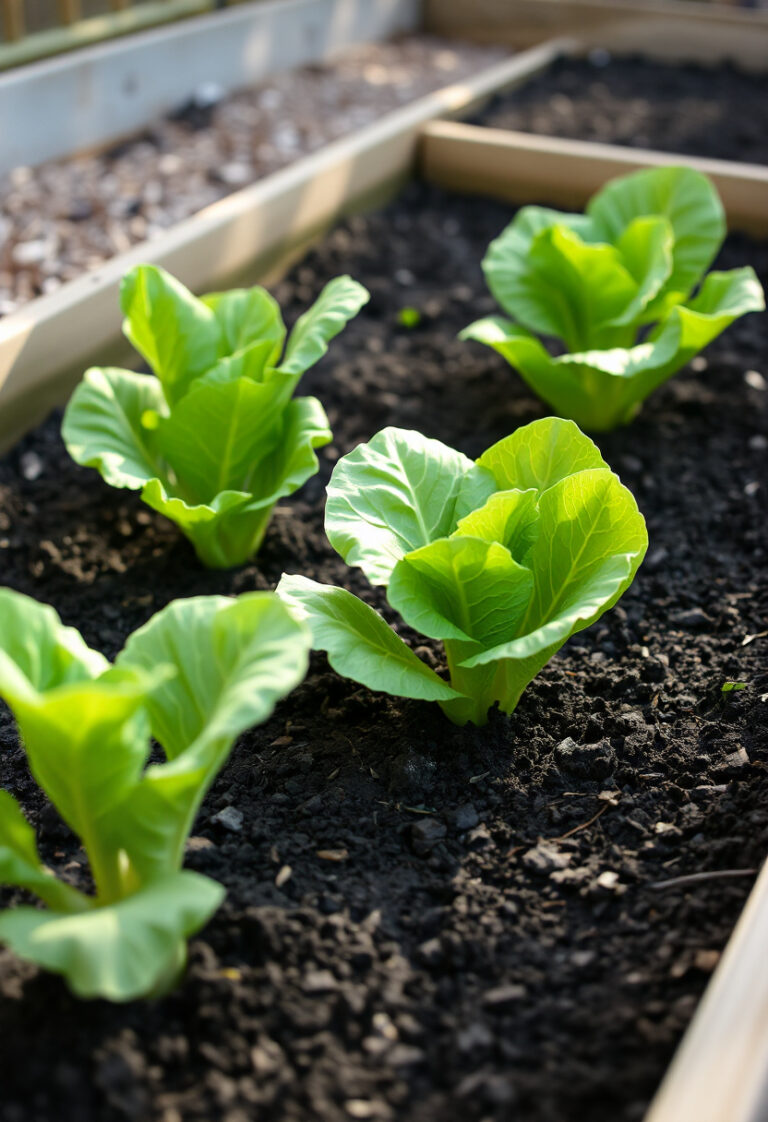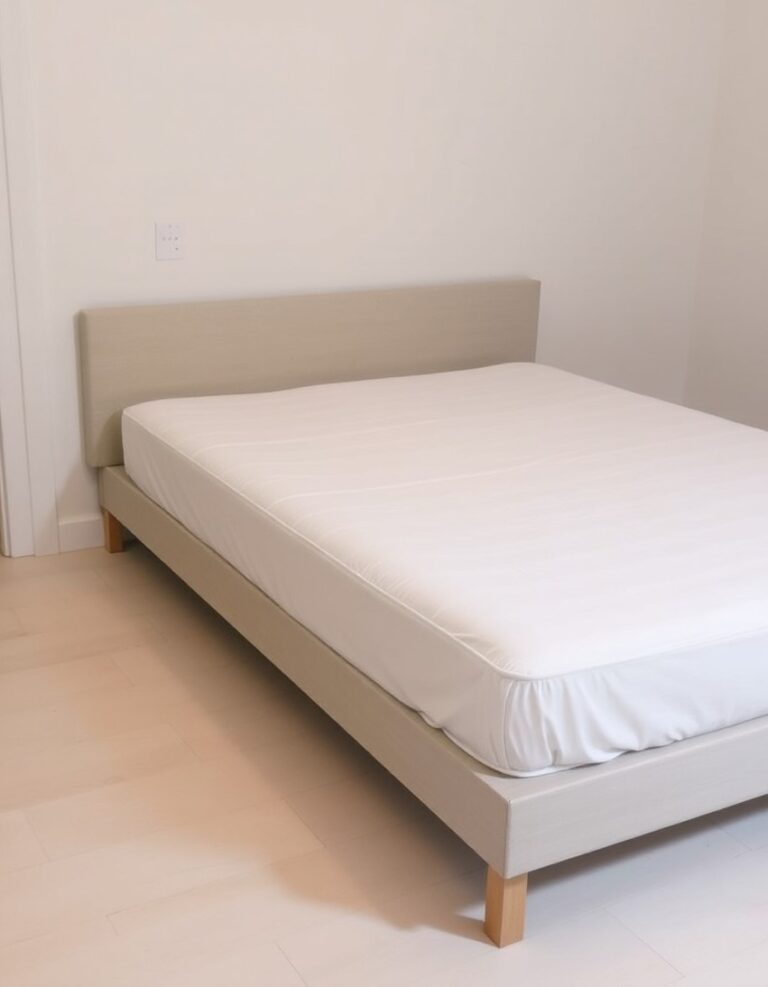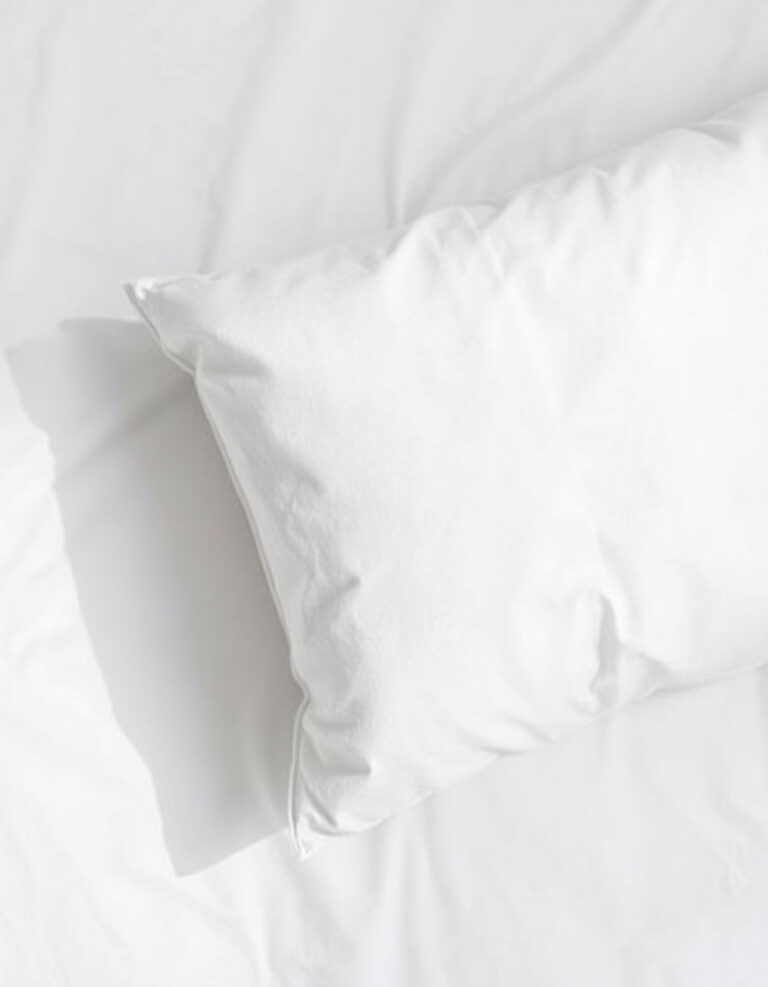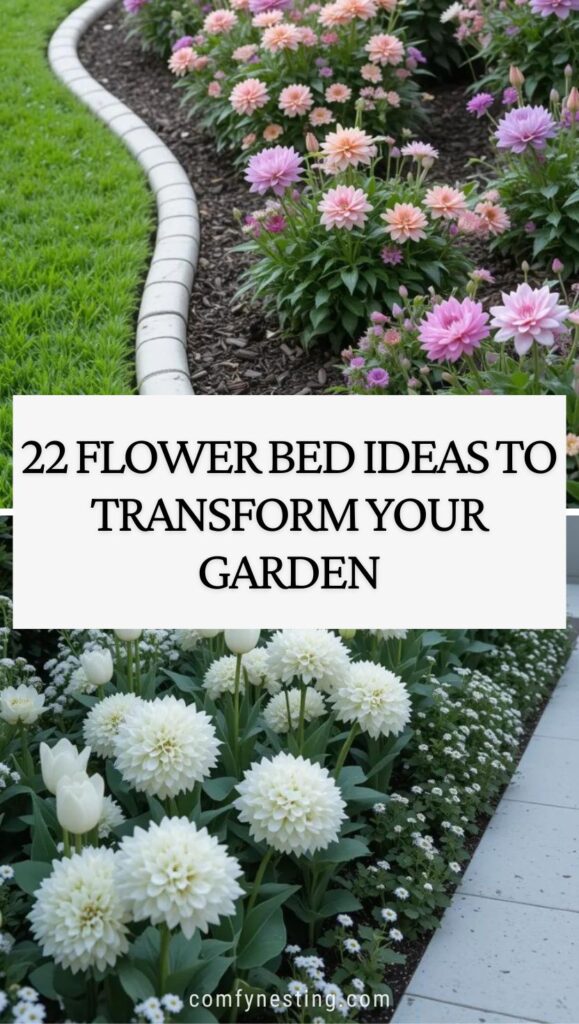
Creating a beautiful flower bed can transform any outdoor space into a welcoming, elegant environment. Whether you have a spacious yard or a compact garden area, thoughtfully designed flower beds add color, texture, and natural beauty to your home’s exterior. This comprehensive guide explores 22 creative flower bed ideas that combine aesthetic appeal with practical gardening techniques.
Understanding the Basics of Flower Beds
A flower bed is more than just a collection of plants. It’s an intentional design element that enhances your landscaping and expresses your personal style. Before diving into specific design ideas, let’s consider some essential factors that contribute to successful flower bed creation:
- Sunlight exposure: Assess how much sun your intended area receives
- Soil quality: Test and amend your soil for optimal plant growth
- Climate considerations: Choose plants suitable for your hardiness zone
- Maintenance requirements: Be realistic about the time you can dedicate
- Visual balance: Consider how the flower bed will complement your home
1. Curved Border Flower Beds
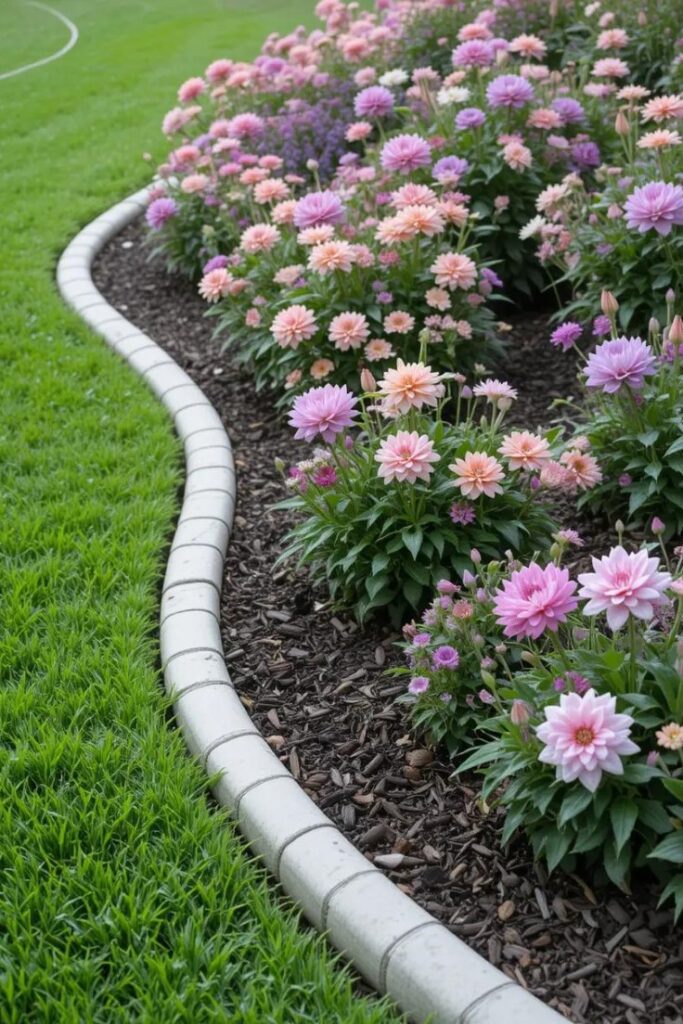
Curved borders add a natural, flowing appearance to your garden design. These flower beds soften the edges of walkways and property lines while creating visual interest. Use a garden hose to outline graceful curves before digging, ensuring your flower bed has a professional, designed look.
Pro tip: Maintain a minimum width of 3 feet to allow adequate space for plants to grow and create layered depth.
2. Raised Flower Beds with Stone Edging
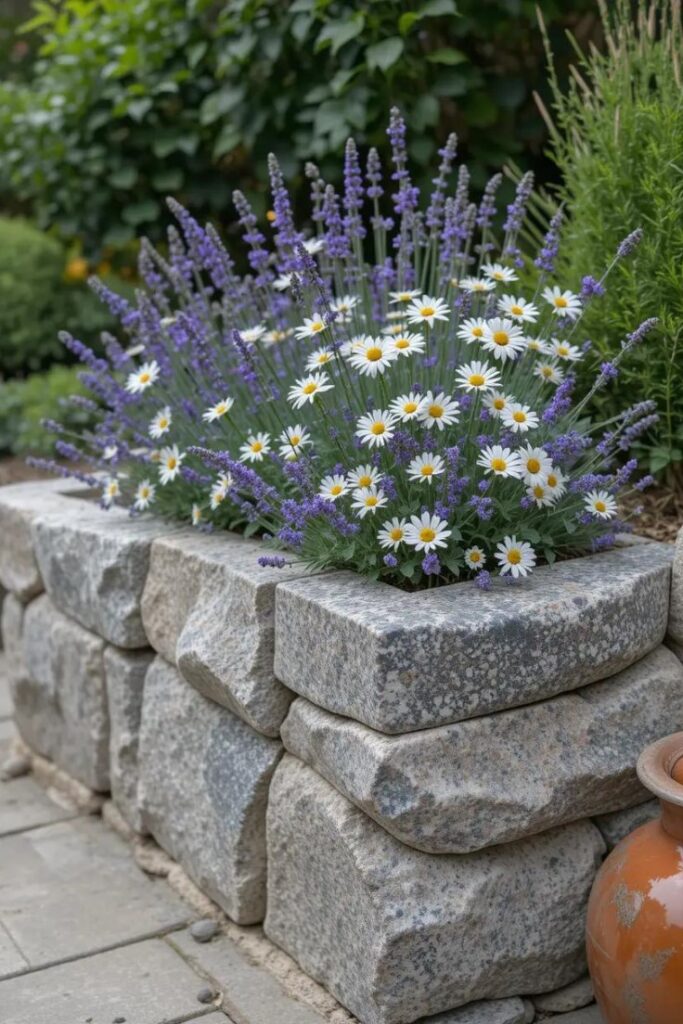
Raised flower beds with stone edging offer both functionality and elegance. The elevation improves drainage, reduces weed intrusion, and creates clear garden boundaries. Natural stone provides a rustic elegance that complements flowering plants beautifully.
Materials like limestone, granite, or sandstone create distinctive edges that highlight your flower bed while providing practical containment for soil and mulch.
3. Country-Inspired Flower Beds

Country-inspired flower beds embrace an informal, abundant approach. This design features a mix of perennials, annuals, and flowering herbs in seemingly random yet carefully planned arrangements.
Key elements include:
- Dense plantings with overlapping blooms
- Diverse plant heights creating vertical interest
- Continuous blooming throughout growing seasons
- Self-seeding flowers that establish natural patterns
This style works beautifully around rural homes but can bring comfortable elegance to any residential setting.
4. Monochromatic Flower Beds
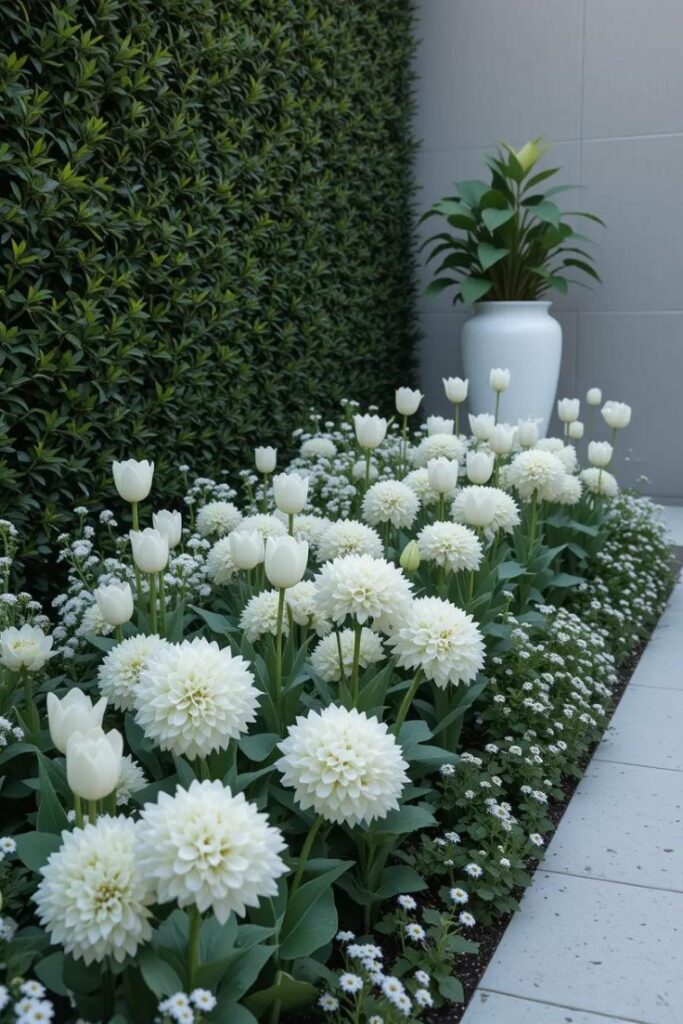
Single-color flower beds create sophisticated, modern displays with strong visual impact. Working within one color family—whether purple, white, yellow, or pink—creates a cohesive, designed appearance. Vary the plants’ heights, textures, and bloom times to maintain interest throughout the seasons.
White monochromatic beds particularly shine in evening gardens, creating a luminous effect as dusk falls.
5. Geometric Pattern Flower Beds
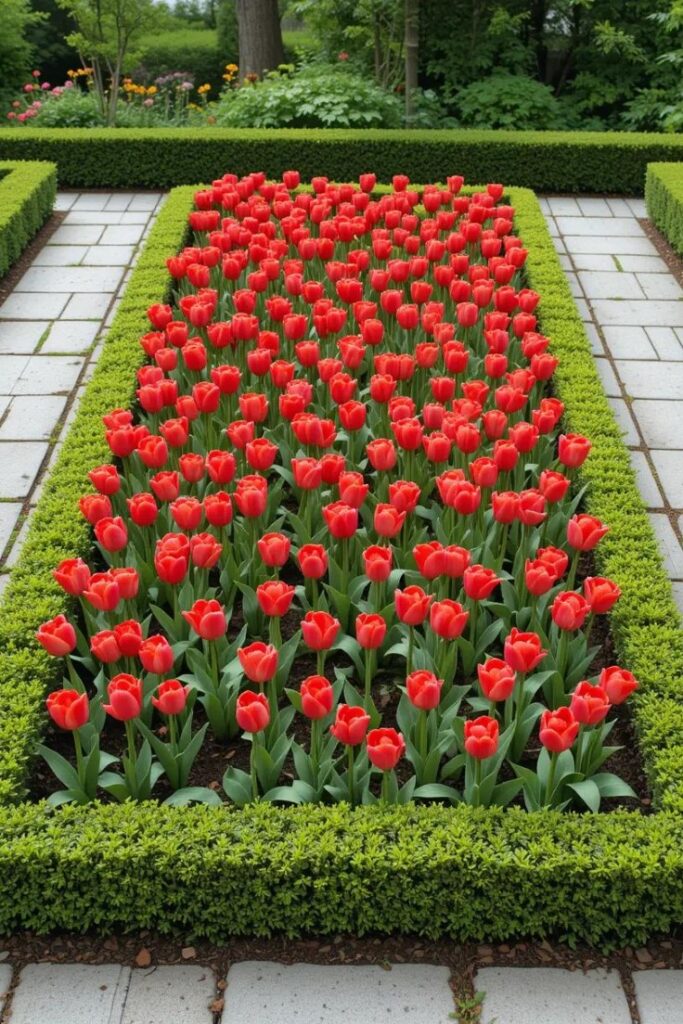
Geometric flower beds introduce formal structure to your landscape. Square, rectangular, circular, or diamond-shaped beds bring order and precision to garden spaces. This approach works especially well in:
- Front yards where curb appeal matters
- Formal garden settings
- Symmetrical landscape designs
- Areas viewed from above
Use consistent plant spacing and clearly defined edges to emphasize these deliberate shapes.
6. Tiered Flower Beds
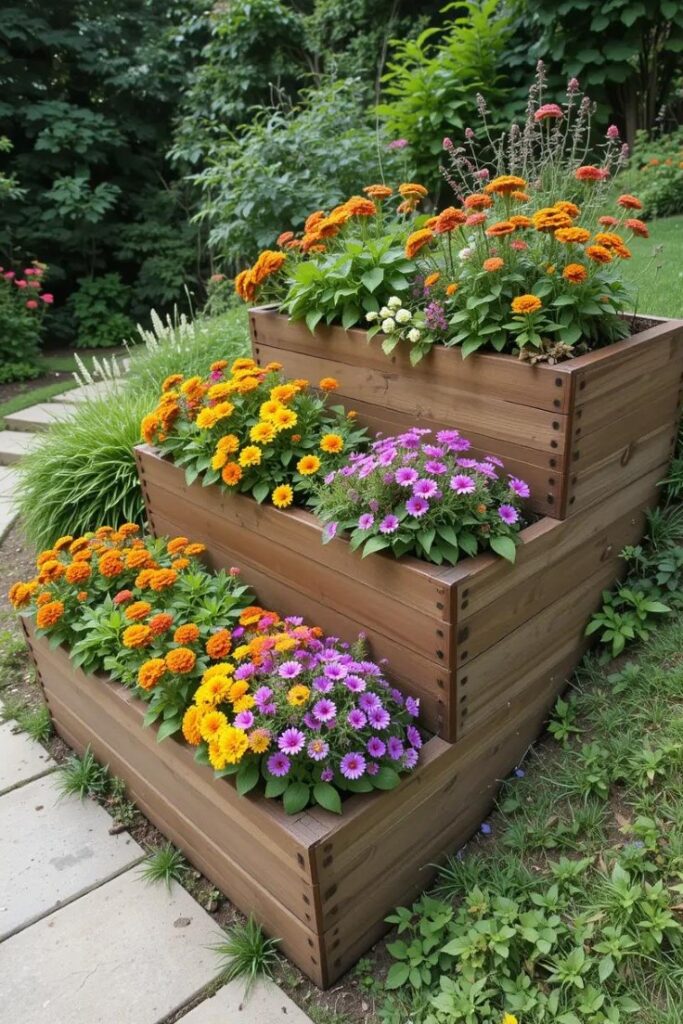
Tiered flower beds maximize vertical interest on sloped properties or can be constructed on flat ground. Multiple levels create natural planting zones and improve visual access to each plant. This design provides:
- Improved drainage for moisture-sensitive plants
- Enhanced visibility of smaller flowering varieties
- Distinctive structure even during dormant seasons
- Natural separation between plant types
Consider using weathered wood, concrete blocks, or natural stone for constructing the tiers.
7. Foundation Flower Beds
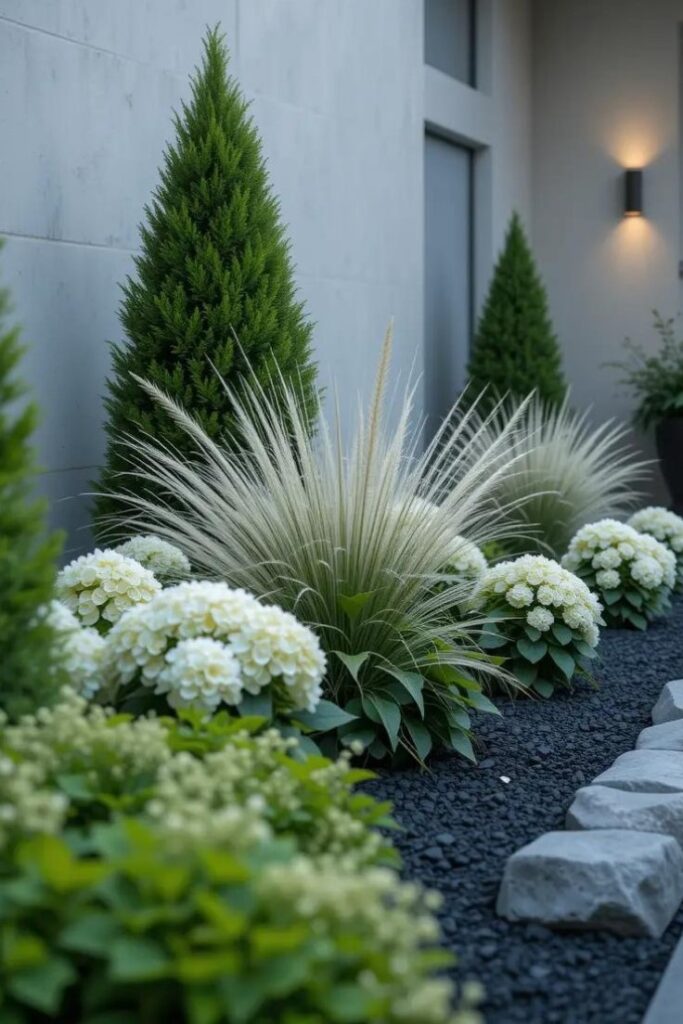
Foundation flower beds soften the transition between your home’s structure and the surrounding landscape. These beds typically follow the contours of your home’s base, creating a frame that enhances architectural features.
When designing foundation beds:
- Allow adequate space between plants and walls for air circulation
- Consider mature plant heights (taller plants at corners, shorter varieties under windows)
- Include evergreens for year-round structure
- Add seasonal bloomers for changing color displays
8. Vertical Flower Beds
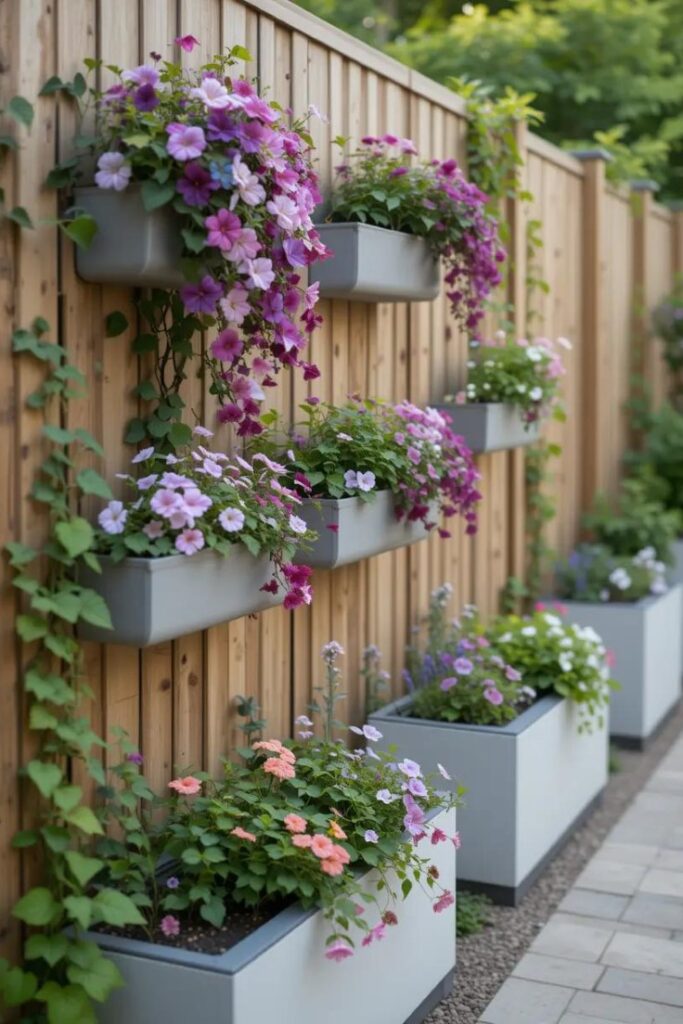
Vertical flower beds utilize trellises, walls, and structures to create upward-growing displays. These space-efficient beds bring color to eye level and beyond, maximizing limited ground space.
Consider:
- Flowering vines like morning glories and clematis
- Wall-mounted containers for cascading annuals
- Pocket planters on fences or garden walls
- Repurposed items like pallets or shoe organizers
9. Rock Garden Flower Beds
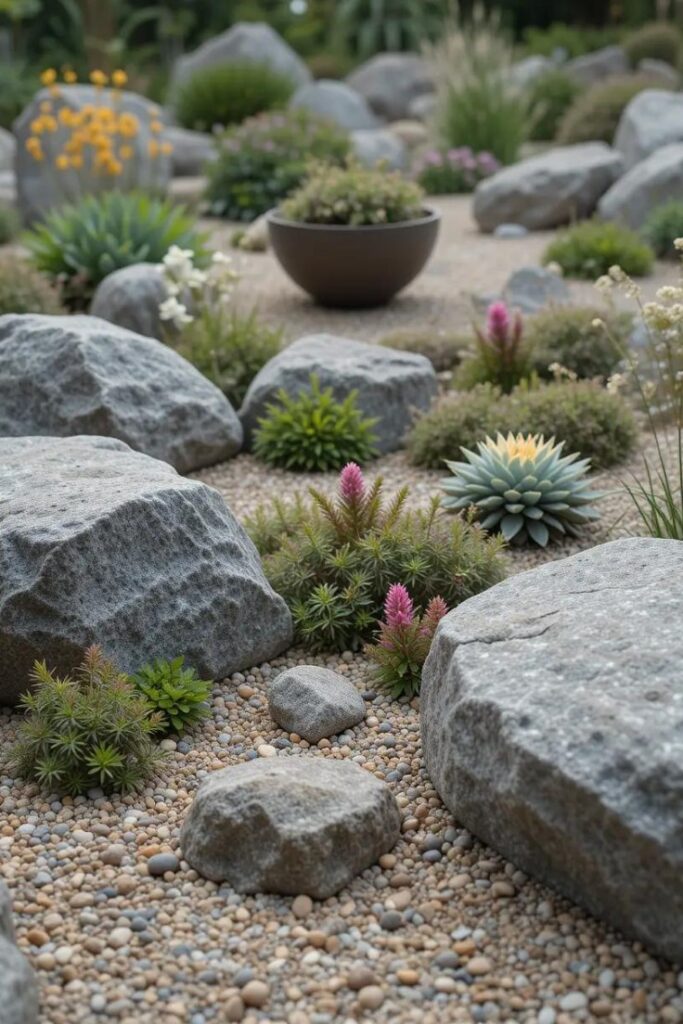
Rock garden flower beds combine stone elements with drought-tolerant flowering plants. This low-maintenance approach creates a natural aesthetic while addressing challenging garden conditions like poor soil or sloped terrain.
Alpine plants, succulents, and native wildflowers thrive in these environments, creating seasonal interest with minimal watering requirements. Position larger rocks to create microclimates—shaded pockets for sensitive plants and sun-warmed spots for heat-loving varieties.
10. Woodland Flower Beds
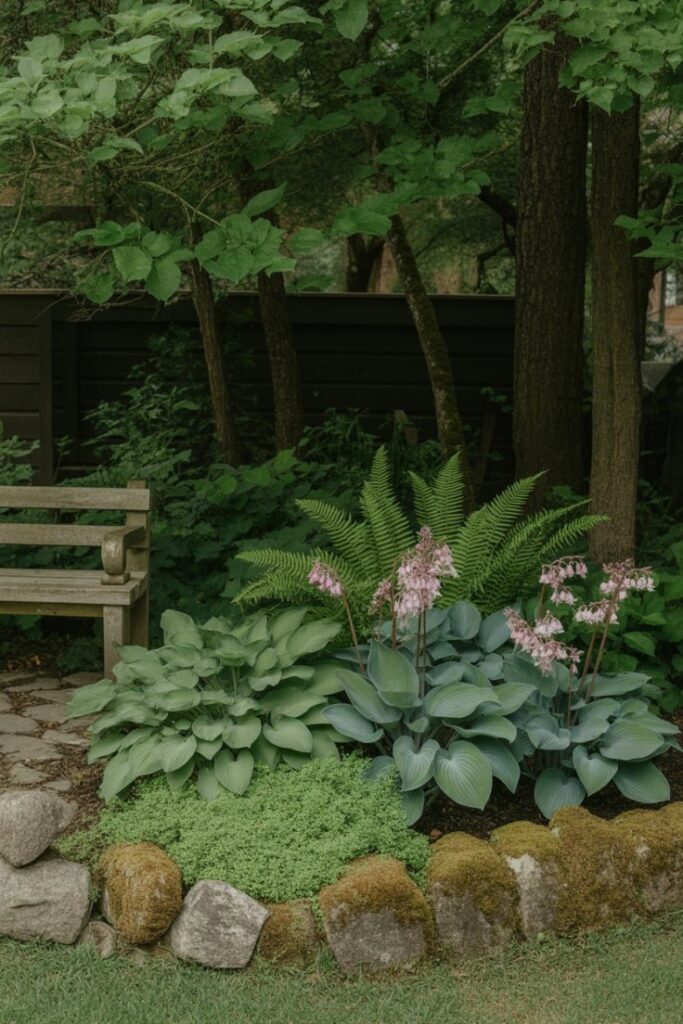
Woodland-inspired flower beds recreate the layered, natural appearance of forest edges. These beds work beautifully in shaded locations where many traditional flowering plants struggle.
Key components include:
- Shade-tolerant perennials like hostas, ferns, and astilbe
- Spring-blooming bulbs that flower before tree canopies leaf out
- Native woodland flowers such as trillium and bleeding heart
- Rich, organic soil that mimics forest floor conditions
11. Container Flower Beds
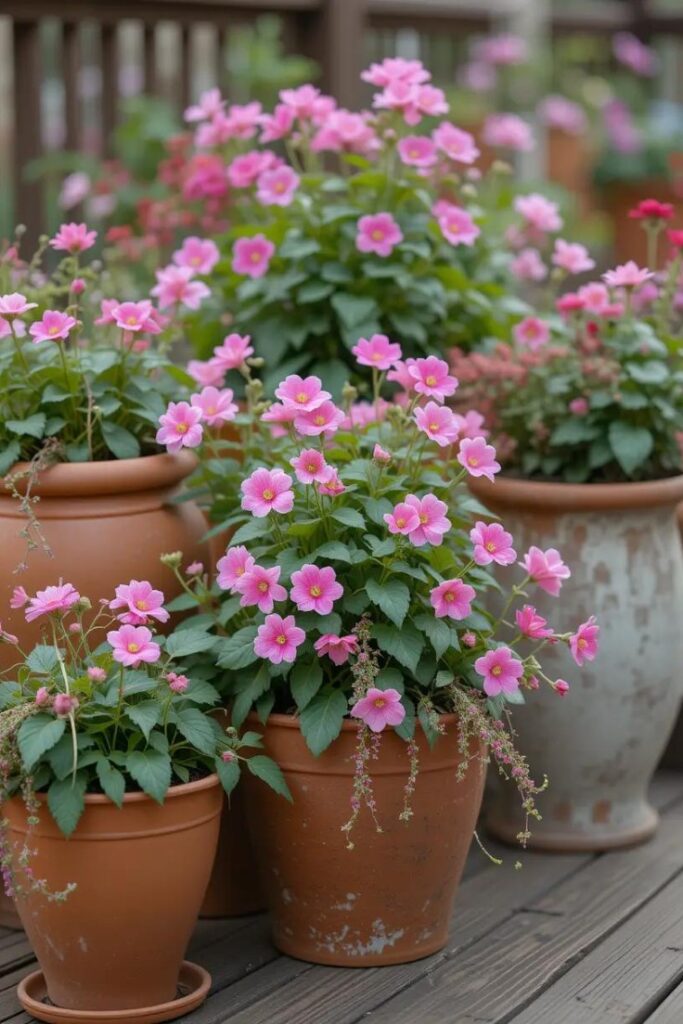
Container flower beds offer flexibility for gardeners with limited space or poor existing soil. By grouping various containers, you create a cohesive flower bed without extensive digging. This approach works well for:
- Patios and decks
- Rental properties
- Areas with aggressive tree roots
- Spaces with poor drainage
Use containers with similar materials or colors for a unified look while varying heights and plant selections.
12. Seasonal Rotation Flower Beds
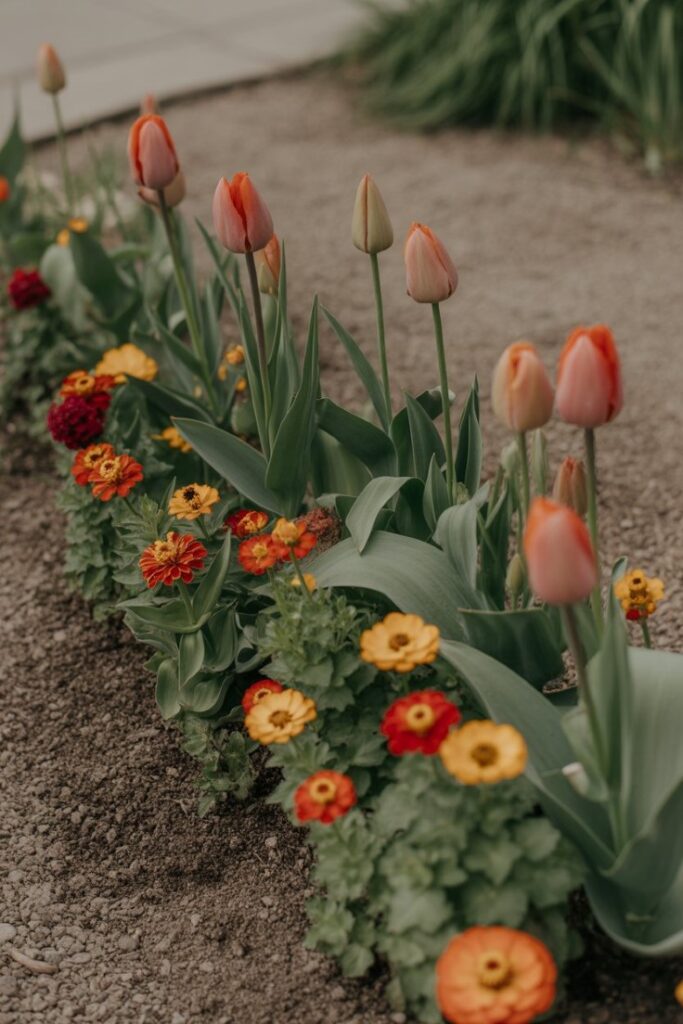
Seasonal rotation beds feature carefully planned successions of plants that maintain visual interest throughout the year. These dynamic flower beds might showcase:
- Spring bulbs followed by summer annuals
- Cool-season flowers transitioning to heat-lovers
- Early, mid, and late-season perennials
- Winter-interest plants with structural elements
This approach requires more planning but rewards with continual displays of fresh blooms.
13. Island Flower Beds
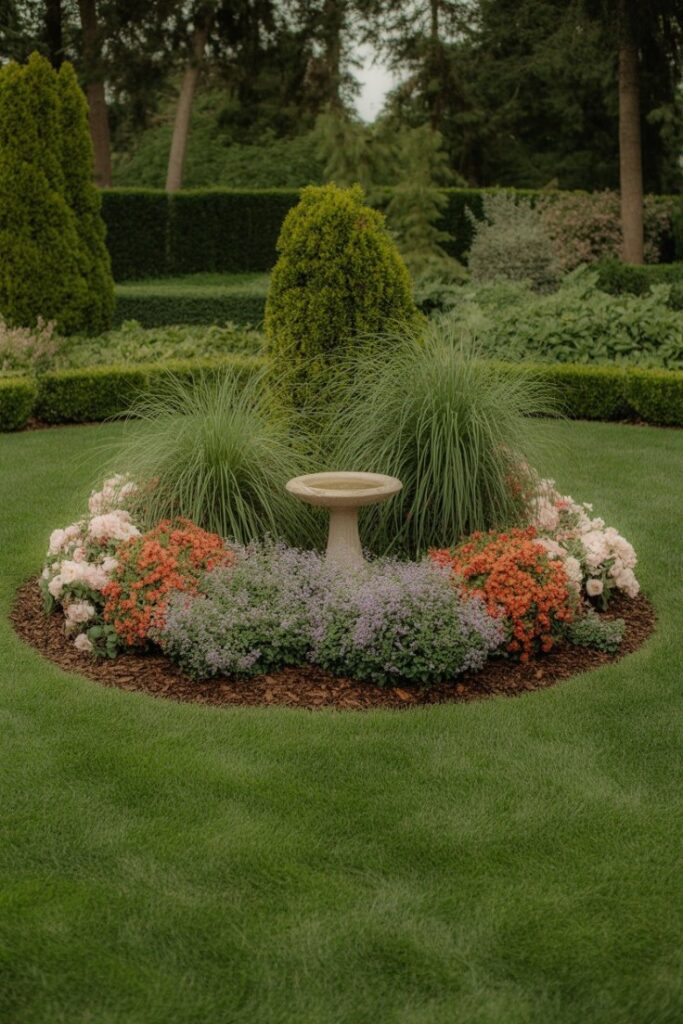
Island flower beds create standalone focal points in lawn areas. These beds provide 360-degree viewing opportunities and serve as key landscape elements. When designing island beds:
- Create sufficient size (minimum 6-8 feet across)
- Establish a clear focal point with distinctive plants
- Include graduated heights with taller plants toward the center
- Consider seasonal interest from multiple viewing angles
14. Rain Garden Flower Beds
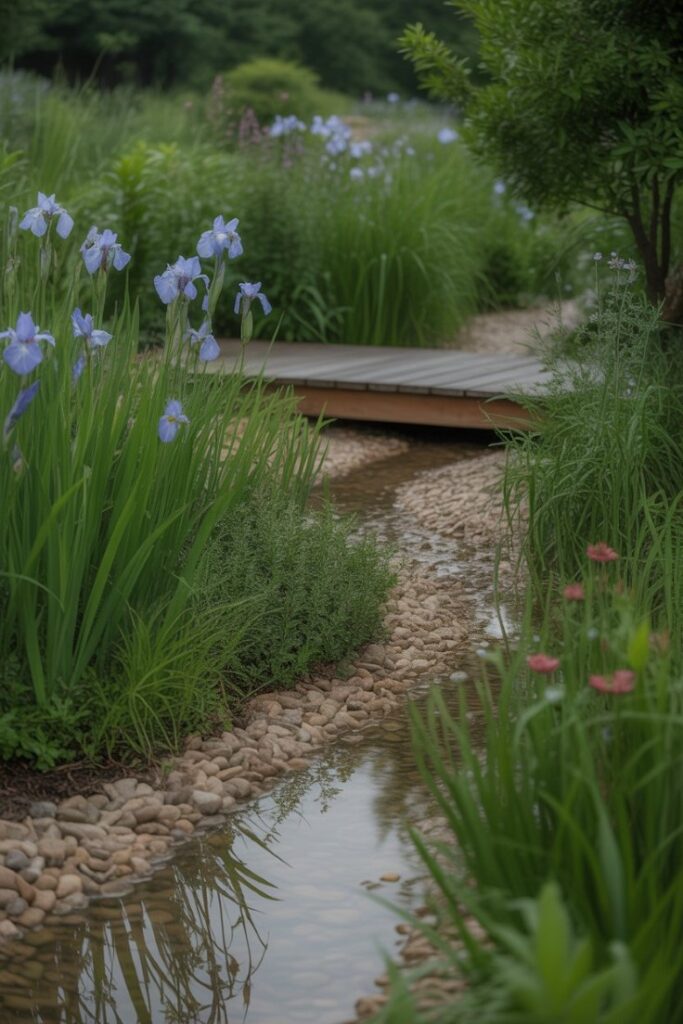
Rain garden flower beds combine beauty with environmental function. These specialized beds collect and filter rainwater from downspouts or paved surfaces while supporting moisture-loving flowering plants.
Benefits include:
- Reduced runoff and improved water quality
- Decreased erosion in problem areas
- Support for native species adapted to fluctuating moisture
- Low maintenance once established
Plants like swamp milkweed, cardinal flower, and blue flag iris thrive in these conditions.
15. Edible Flower Beds

Edible flower beds blend beauty and utility by featuring flowers that are safe for consumption. These multipurpose beds add color to your landscape while providing culinary ingredients.
Popular edible flowers include:
- Nasturtiums with peppery-flavored blooms
- Calendulas adding golden color to salads
- Pansies offering mild wintergreen notes
- Borage with cucumber-flavored blue flowers
Integrate herbs with attractive flowers like chives, lavender, and sage for additional culinary value.
16. Drought-Resistant Flower Beds
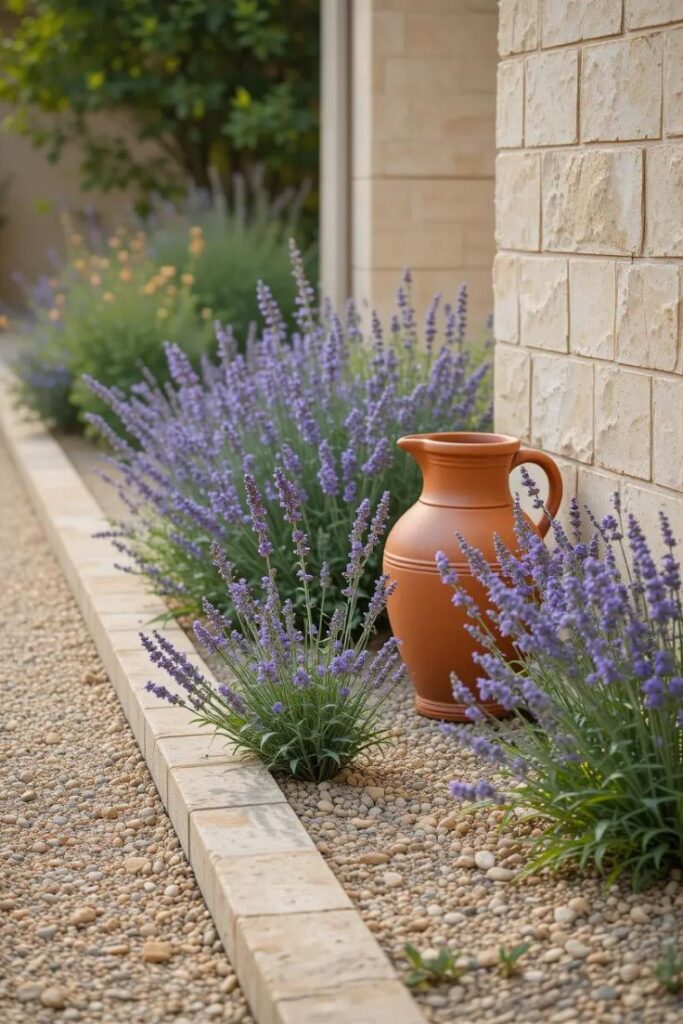
Water-wise flower beds feature plants adapted to low-precipitation conditions. These environmentally conscious beds maintain visual interest while conserving resources.
Design elements include:
- Deep mulching to retain soil moisture
- Grouping plants with similar water needs
- Incorporating native species adapted to local rainfall patterns
- Using gravel or stone elements to reduce planted area
Flowering plants like yarrow, Russian sage, and blanket flower thrive with minimal supplemental watering.
17. Cut Flower Beds
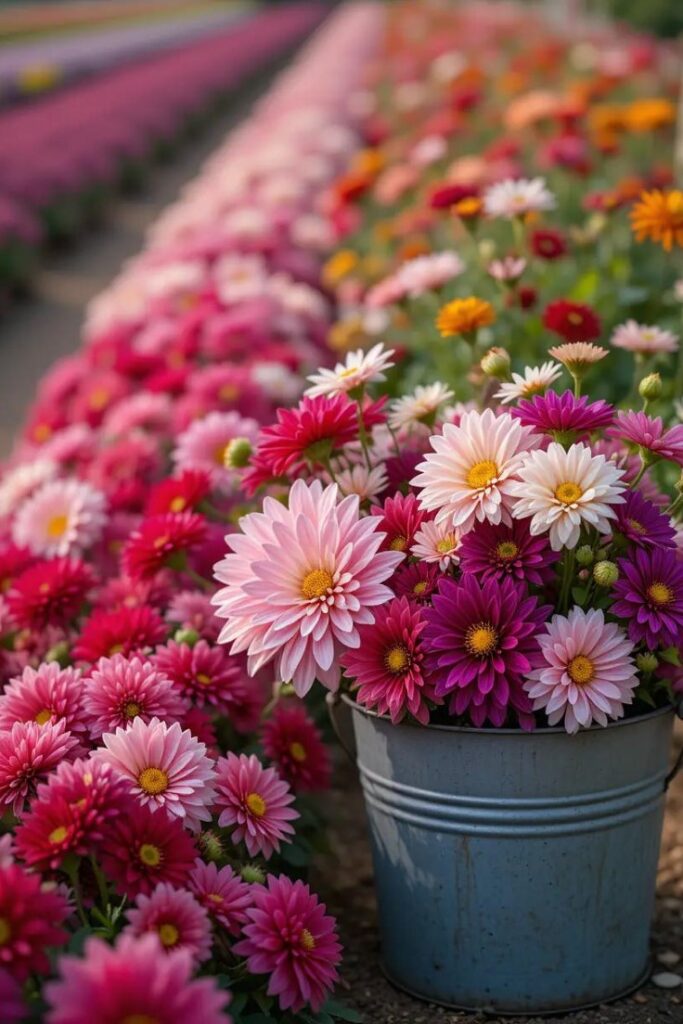
Dedicated cutting gardens provide fresh flowers for indoor arrangements without depleting your display beds. These practical flower beds focus on varieties with long stems and lasting blooms.
Organize plants in rows for easy access and maintenance, including:
- Zinnias for summer-long color
- Dahlias for dramatic late-season blooms
- Cosmos for airy, abundant flowers
- Snapdragons for architectural interest
18. Night-Blooming Flower Beds
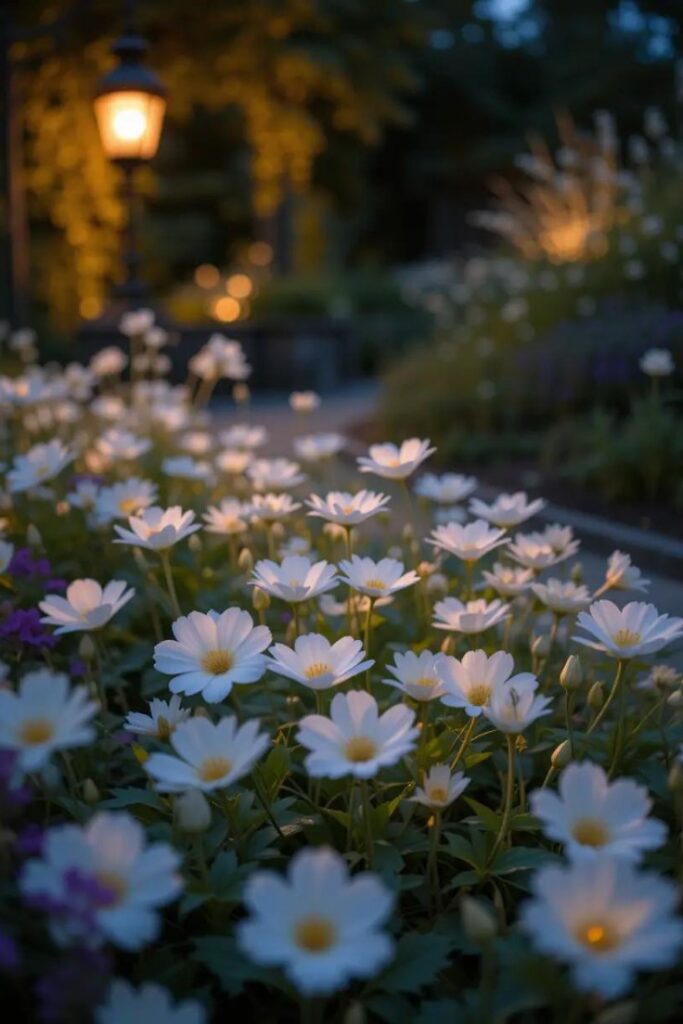
Evening flower beds feature plants that open, release fragrance, or become more visible during twilight and nighttime hours. These specialized beds extend garden enjoyment beyond daylight hours.
Key components include:
- White-flowering plants that reflect moonlight
- Night-blooming species like evening primrose and moonflower
- Strongly fragrant varieties that release scent after sunset
- Light-colored hardscaping that enhances visibility
Place these beds near patios or seating areas where evening gatherings occur.
19. Medicinal Flower Beds
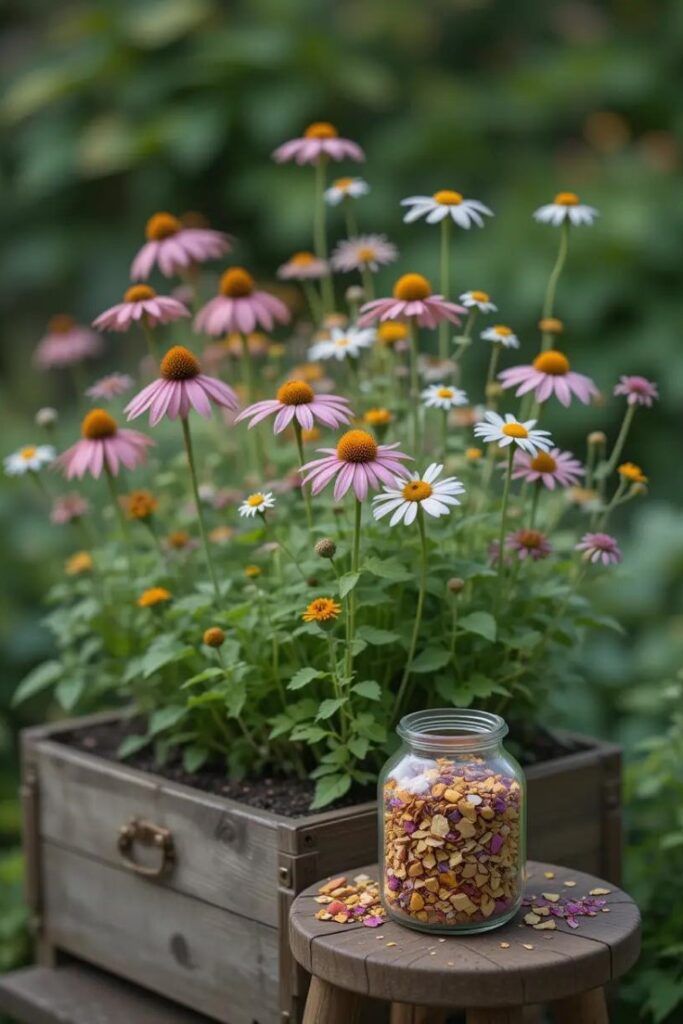
Medicinal herb flower beds combine visual beauty with traditional wellness plants. These multifunctional beds feature flowering herbs known for both ornamental and therapeutic properties.
Popular choices include:
- Echinacea with striking purple blooms
- Chamomile featuring delicate daisy-like flowers
- Calendula offering bright orange and yellow flowers
- Bee balm providing vibrant red, pink, or purple blooms
Arrange plants according to height and spread, with informational markers for educational value.
20. Tropical-Inspired Flower Beds

Bold, exotic flower beds bring dramatic flair to traditional landscapes. These beds feature large-leaved plants and vibrant blooms that create a lush, abundant appearance.
In colder climates, use:
- Tropical-looking perennials that survive winter dormancy
- Annual exotic plants moved indoors during cold months
- Structural elements reminiscent of tropical settings
- Bright color schemes that evoke warmer regions
Cannas, elephant ears, and hibiscus create strong tropical impressions.
21. Perennial Border Flower Beds
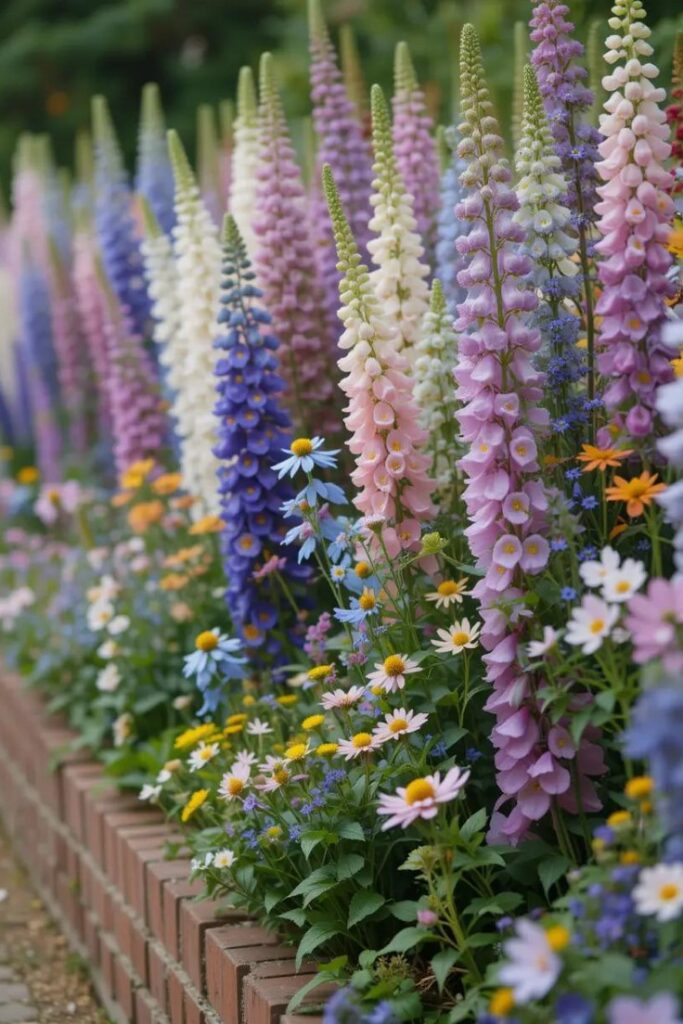
Classic perennial borders provide reliable, returning beauty with minimal replanting. These traditional flower beds feature carefully planned succession planting where something is always in bloom.
Design considerations include:
- Graduated heights (tallest at back or center)
- Overlapping bloom times throughout growing seasons
- Complementary color schemes for visual coherence
- Structural plants that maintain interest between flowering periods
22. Native Plant Flower Beds
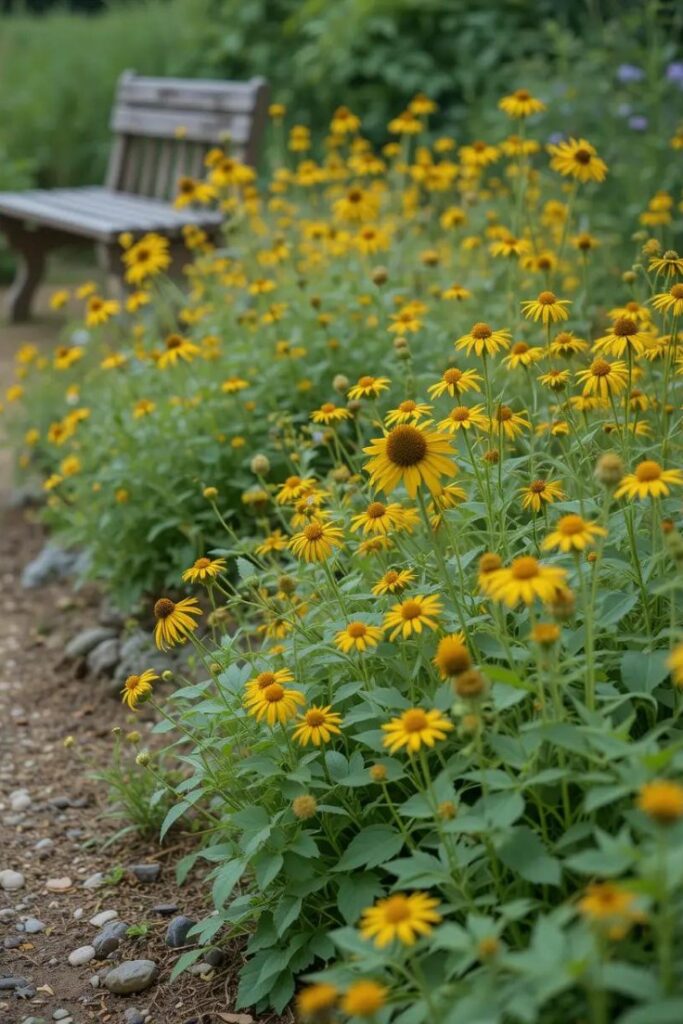
Native plant flower beds celebrate regional botanical heritage while providing optimal habitat for local wildlife. These ecologically sound beds feature species that evolved in your specific region.
Benefits include:
- Reduced maintenance as plants are adapted to local conditions
- Enhanced biodiversity supporting native insect and bird populations
- Water conservation through deep root systems
- Seasonal displays aligned with natural regional cycles
Research local native plant societies for region-specific recommendations.
Questions & Answers
How deep should soil be in a flower bed?
For most flower beds, a minimum soil depth of 6-8 inches is essential for proper root development. Raised beds should have at least 12 inches of soil to accommodate deeper-rooted perennials. When preparing new beds, remove existing sod and loosen compacted soil before adding amendments for optimal plant growth.
How often should I fertilize my flower bed?
Most flower beds benefit from fertilization twice yearly – once in early spring as growth begins and again in mid-summer for late-season bloomers. Choose slow-release formulations for perennial beds and water-soluble options for annuals that need more frequent feeding. Always follow product instructions to avoid over-fertilizing.
What’s the best way to control weeds in flower beds?
Effective weed control combines preventive and responsive measures. Start with 2-3 inches of quality mulch to suppress weed germination. Consider installing landscape fabric beneath decorative mulch for stubborn areas. Hand-pull emerging weeds promptly before they set seed, and use targeted herbicides only when necessary, applying directly to unwanted plants.
How do I prepare my flower beds for winter?
Proper winter preparation ensures healthy plants the following spring. Remove annual plants completely, cut back perennials according to species requirements, and apply a fresh 2-inch layer of mulch after the ground freezes. Leave ornamental grasses and seed heads with winter interest standing until early spring for visual appeal and wildlife support.
Can I mix different types of plants in one flower bed?
Combining plant varieties creates dynamic, interesting flower beds when done thoughtfully. Group plants with similar water, light, and soil needs together. Consider mature sizes to prevent overcrowding, and plan for continuous visual interest by including plants with different blooming periods, foliage textures, and seasonal highlights.
How do I improve poor soil in my flower bed?
Amend challenging soil gradually over several seasons for lasting improvement. For clay soil, incorporate coarse sand and organic matter to improve drainage. For sandy soil, add compost and aged manure to increase water retention. Annual applications of 2-3 inches of quality compost worked into the top layer will progressively enhance soil structure and fertility.
What spacing should I use between plants in my flower bed?
Proper spacing depends on mature plant sizes and desired effects. For instant impact, place plants at distances equal to half their mature spread. For economical long-term planting, follow mature spacing guidelines on plant tags. Remember that proper spacing improves air circulation, reducing disease problems and allowing each plant adequate resources for optimal growth.

